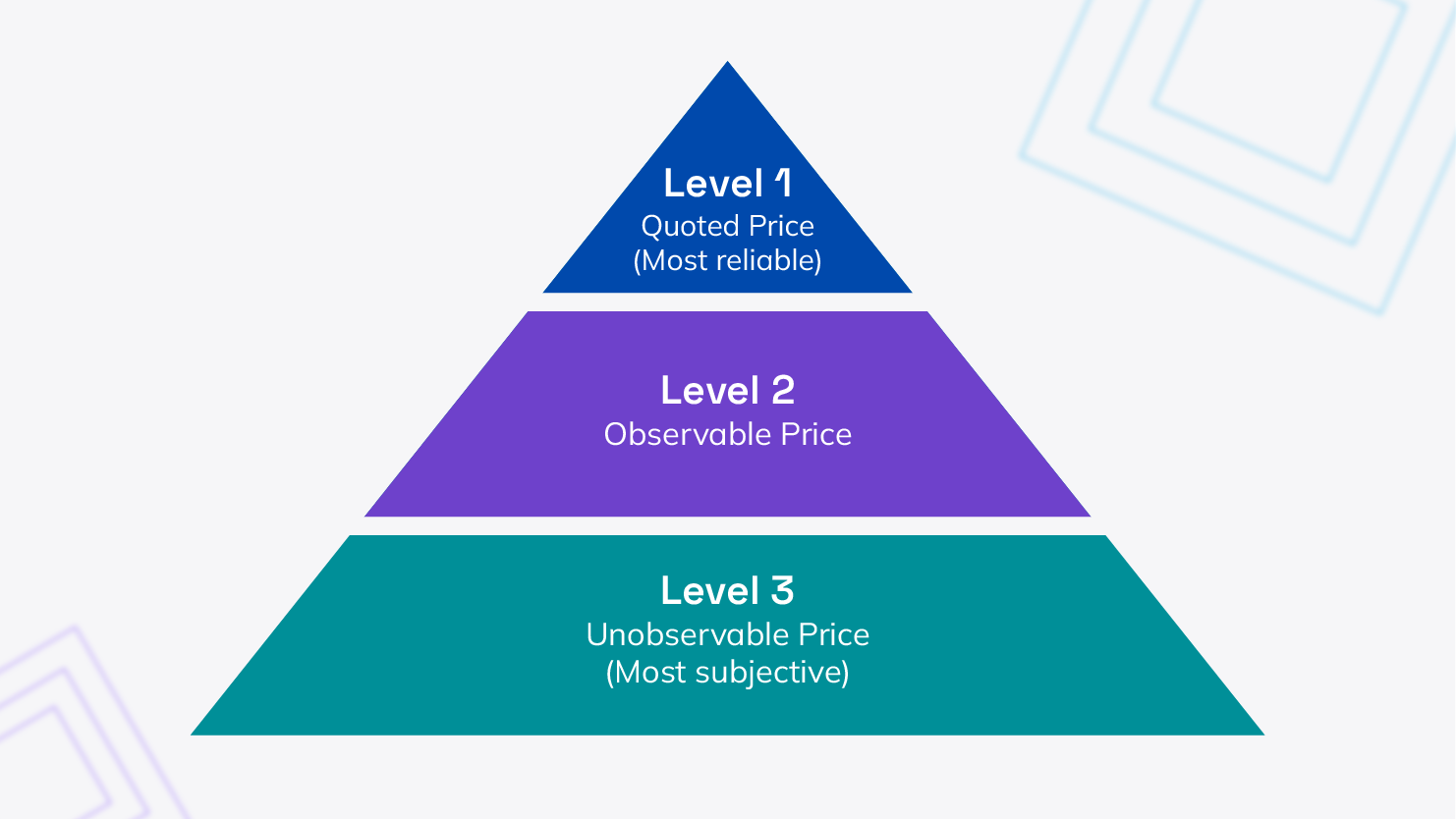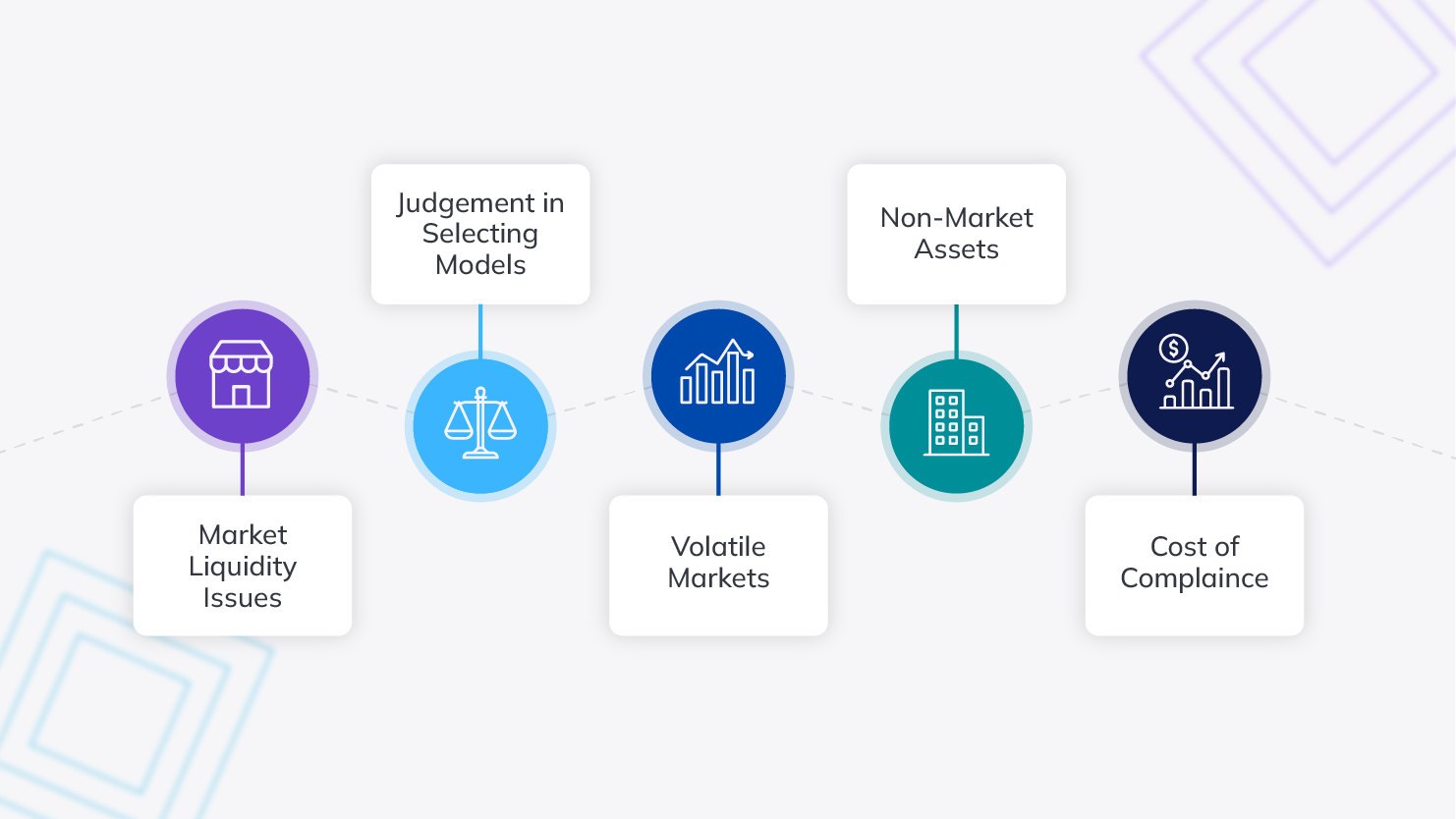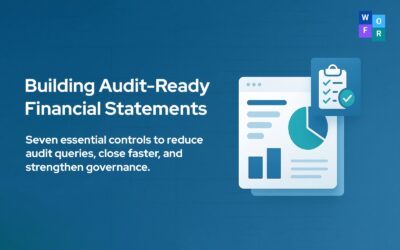Fair Value under IFRS 13 represents the price you would receive to sell an asset or transfer a liability in an orderly transaction between market participants in the principal market at the measurement date. This standard applies to assets and liabilities measured on a fair value basis across various industries.
Fair value is not just a number – it can directly
· Influence financial statements,
· Affect investor confidence, and
· Impact decision-making in volatile markets.
The Valuation Techniques
IFRS 13 outlines three main valuation approaches to determine fair value:
| Valuation Technique | Description | Use Cases | Challenges |
| Market Approach | Uses market prices of identical/ comparable assets | Liquid assets (stocks, bonds) | Market volatility, lack of active markets for some assets |
| Income Approach | Converts future cash flows into a present value | Intangibles, income-producing assets | Relies on assumptions on subjective inputs (discount rates, future growth) |
| Cost Approach | Reflects the cost to replace the service capacity of the asset | Tangible assets (buildings, machinery) | Subjective estimates, lack of market reflection, complexity |
The Fair Value Hierarchy
The IFRS 13 Fair Value Hierarchy ranks inputs into three levels to reflect the relative reliability of the information used in determining fair value.
Level 1: Quoted Prices in Active Markets for identical assets or liabilities
Example: Stocks traded on an active exchange.
Challenges: Level 1 classification refers to assets or liabilities for which observable, quoted prices exist for identical assets in an active market. It is important to note that the Level 1 classification is not exclusively for listed securities. Unlisted securities can also fall under Level 1 if their prices are observable and meet the criteria of an active market
Level 2: Observable Inputs Other than Quoted Prices
Example: Bonds traded in less active markets
Challenges: Using observable inputs might seem easier, but often market data is imperfect or unavailable for specific assets, forcing companies to adjust inputs to fit their needs. This introduces judgement, and it’s often hard to compare valuations across companies or industries.
Level 3: Unobservable Inputs
Example: Internally developed models based on assumptions and future expectations.
Challenge: This level is the most subjective and requires significant management judgment. It’s typically used for illiquid assets like real estate, private equity, or certain intangible assets. Valuation can vary significantly based on assumptions, leading to investor skepticism and difficulty in creating comparable reports.

Practical Challenges in Applying Fair Value
Market Liquidity Issues
In times of market volatility or for niche/emerging markets, there may be no active market for an asset, leaving companies to rely on less observable data or internal models (Level 3).
Judgement in Selecting the Valuation Model
Fair value measurement often requires subjective judgement, especially when selecting valuation models or deciding between multiple techniques. This can lead to bias or inconsistent application across similar transactions.
Volatile Markets
During market turmoil, the gap between observable market prices and internal model estimates can widen significantly, affecting fair value measurement.
Non-Market Assets (Eg. Real Estate, Intangibles)
Real estate or intangible assets (like intellectual property) often lack readily observable prices. Companies must use Level 3 inputs, creating significant subjectivity in determining the asset’s fair value.
Cost of Compliance
Implementing fair value measurement can be costly, requiring sophisticated systems, internal models, and external consultants. For startups or small businesses, this becomes a significant resource drain, especially for complex Level 3 assets.

Impact of Fair Value Measurement on Investor Decision
| Level 1 | Investors tend to trust Level 1 inputs because they are transparent and based on real market prices. This builds confidence in the financial statements. |
| Level 2 | While not as reliable as Level 1, Level 2 inputs are still based on observable market data, which means investors can usually reconcile the numbers with similar data they can access. |
| Level 3 | Level 3 inputs create the most uncertainty. Investors may view valuations based on internal models with caution, as they introduce bias and subjectivity. Companies relying heavily on Level 3 inputs may see reduced investor confidence, higher risk premiums, and lower valuations. |
Disclosure Requirements – Because Transparency is Key
Hierarchy Level Disclosure: Companies must disclose which level of the fair value hierarchy was used, providing investors with a better understanding of how valuations were derived.
Valuation Techniques: The standard requires disclosure of the valuation approach (market, income, or cost) used, and any changes in techniques from previous periods must be explained.
Sensitivity Analysis: For Level 3 inputs, companies must disclose the impact that changes in assumptions would have on fair value measurements. This helps investors assess the risk associated with the valuation.
Fair value is required not only under Ind AS 113 but also plays a critical role across several other standards. Below are examples where fair value applies to measurement and disclosure:
| Category | Fair Value for Measurement and Disclosure | Fair Value for Disclosure Only |
| Financial Assets | Measured at fair value through profit and loss or through other comprehensive income under Ind AS 109. | Financial assets at amortized cost (e.g., SVB Bank) |
| Held-for-sale assets | Fair value less costs to sell, as required under Ind AS 105. | N/A |
| Property, Plant & Equipment (PPE) | Measured using revaluation model under Ind AS 16. | N/A |
| Biological Assets | Measured at fair value under Ind AS 41. | N/A |
What Happened at Silicon Valley Bank (SVB)?
SVB’s downfall was largely driven by mismatches in its assets and liabilities. The bank held a significant portion of its investments in long-term securities, which it classified as held-to-maturity (HTM). Under this classification, these assets are carried at amortized cost and not regularly marked to fair value, meaning their changing market value didn’t impact SVB’s reported financial health.
However, as interest rates rose, the market value of these long-term securities dropped significantly. If SVB had been required to mark these assets to fair value under the available-for-sale (AFS) classification, it would have revealed a massive drop in the value of their assets.
Due to rapid withdrawal of funds, SVB was forced to sell some of these long-term securities at a loss, which brought its hidden losses into the spotlight, leading to a liquidity crisis and, ultimately, the bank’s failure.
Conclusion
SVB’s collapse shows that fair value accounting plays a critical role not only in measuring assets and liabilities but also in maintaining market confidence. Even though the bank used amortized cost for the majority of its assets, the lack of transparency around the declining market value of those assets proved disastrous.
Fair value measurement is not just about ticking a compliance box. It’s about giving investors reliable data that they can trust. It involves understanding market volatility, subjectivity and taking judgement calls that significantly impact how your business is perceived.
By ensuring accurate valuations and robust disclosures, companies can enhance investor confidence and minimize valuation risks.



